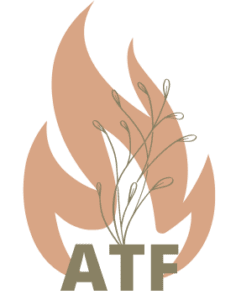Webinar
Webinar recording.
Fires of Unusual Size (FOUS) are large fires that exhibit at least one rapid growth event, and keep growing after that. While “megafire” is widely used and has no specific definition, FOUS are defined by specific characteristics. We can count how many happen each year, and we can ask scientific questions about how they differ from other fires. What makes them so big? What triggered the big growth event(s)? Are they increasing each year? Brian Potter, Research Meteorologist with the Pacific Northwest Research Station, will talk about the trends, look at how weather influences their growth, and give some examples of unanswered questions about them.
Webinar recording.
In this webinar, a panel of scientists and practitioners will discuss a number of management techniques and research questions being utilized or tested in an effort to reduce the presence of introduced grasses and restore the historic fire regime. These include:
- Researching whether fire historically maintained the clumpy pattern of native vegetation in a self-perpetuating cycle.
- Reducing the risk of wildfire severity and extent, retaining native plant communities, and maintaining ecological processes in dry desert systems through a variety of invasive species removal techniques.
- Producing fire breaks, or strips of treatment intended to repress the forward progress of wildfires, through restoration of native vegetation patchiness and pruning of native woody species.
- Utilizing new technologies to detect invasive grasses and monitor their spread, assess treatment and cost-effectiveness, and present results from a networked experiment that tests vegetation management practices across the southwestern US.
Webinar recording.
Since 2010, Australian national and state governments have commissioned at least 101 post-emergency inquiries and reviews, each of which makes recommendations to improve the way we prevent, prepare for, respond to and recover from wildfires. Many of these reviews recommend specific changes to laws and policies, for example, to simplify permitting processes for clearing native vegetation and mitigating fire hazards. Of course, catastrophic wildfires are a growing challenge around the world, not just in Australia. Fires are breaking records for size, severity and cost every other year, and ‘unprecedented’ events are becoming distressingly common. As a result, recognition that changing fire regimes will require changes to the rulebooks, is also not limited to Australia. In California, governments have passed laws that have begun to address issues with liability and insurance arrangements for prescribed fire and to promote the reintroduction of cultural fire management. In this presentation, we take a step back and ask: What might it look like to design a great legal framework for the kinds of fire regimes that we are going to see in future? And how might we improve the role of law in facilitating rapid adaptation to increasingly frequent and destructive wildfires, to preserve the hope that we might one day live well with fire?
Webinar recording.
In an effort to address key capability gaps, the NOAA National Environmental Satellite, Data, and Information Service (NESDIS) has established a Wildland Fire Program focused on impactful service delivery. NESDIS Wildland Fire Program projects, aimed at addressing critical active fire capability gaps, are underway, with product and service demonstrations expected to begin by July 2023. The improved products are generated using the Next Generation Fire System (NGFS), which consists of a sensor agnostic (applicable to geostationary or low earth orbit satellites) active fire algorithm and higher order capabilities, including alerting, incident situational awareness tools that are highly tolerant of cloud cover, and an event-based data model that combines time-resolved satellite fire detections with complementary geospatial data layers. Terrain corrected GOES-R ABI imagery and fire detections have also been developed. In addition, a lightning prediction model, customized for incident management, is under development. With Alaska wildland fire applications in mind, this presentation will introduce the NESDIS Wildland Fire Program, highlight product development and demonstration activities, and facilitate continued dialogue with stakeholders.
Webinar recording.
This webinar will provide an overview of the major changes in CO-WRA, including modification of Scott and Burgan (2005) standard fire behavior fuel models to better reflect fuel types in Colorado, incorporating LiDAR to produce higher spatial resolution data products, and advanced wildland-urban interface risk analysis. Presenters will explain how these datasets and information can be used to: (1) increase public awareness about wildfire risk; (2) support wildfire risk reduction efforts, decision-making, and research from state to local scales; (3) identify high priority areas; (4) assist in the development of Community Wildfire Protection Plans (CWPPs) and other hazard mitigation plans; and (5) complement forest stewardship and forest management plans.
After a brief review, presenters will explore discussions and questions from participants to address technical issues.
Webinar registration.
Parts of the western U.S., like southern California and Colorado, have a history of damaging debris flows after wildfire. Other regions are facing new postfire risks due to expanded wildfire activity. After a wildfire, emergency managers need rapid answers to the questions: Where in the burn area are debris flows likely? How much rain will it take to cause a problem? And how big will that problem be?
Using examples of recent postfire events, Jason Kean will describe how the U.S. Geological Survey and its partners work to answer those questions. He will also discuss current research to improve debris-flow hazard assessments with new tools to answer the questions: Where will debris flows will travel? How long it will take the burn area to recover? And what are the risks to future fires?
Webinar recording.
This presentation examines how post-fire planting success is influenced by climatic, microclimatic, topographic, and biotic factors. Multiple seedling planting experiments across northern New Mexico were evaluated using seedling monitoring, remote sensing, drone, and microclimate data. The results show tree seedling survival in high severity burn patches is largely determined by microclimatic refugia formed by both topographic variation and existing vegetation. Using machine learning and a new index of seedling survival probability, the most suitable artificial reforestation sites can be mapped for efficient restoration planning. This presentation posits that success rates of reforestation efforts in post-wildfire landscapes could be substantially increased by considering site survivability and suitability.
Webinar recording.
Description: Climate change is not just a global issue, but a local and regional reality. Action is needed at all levels, and the integration of landscape conservation strategies and the natural solutions the landscape conservation community can implement at scale must be considered and supported as part of the climate solution to mitigate and adapt to our changing climactic conditions.



